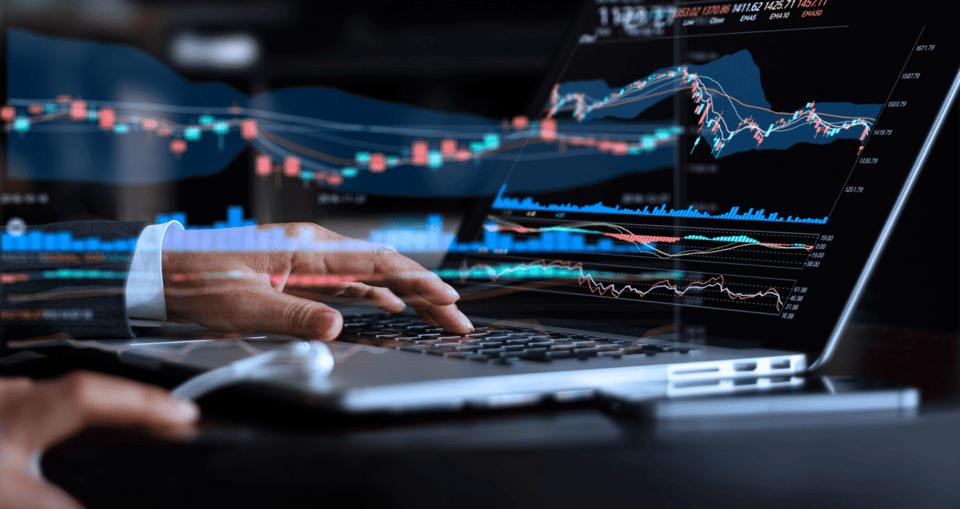The contemporary futures marketplace is a fast-moving, ultra-competitive environment. Orders are sent to the market remotely via internet connectivity and executed at near-light speeds. From sophisticated institutional participants to live futures trading newbies, low latency trading within the marketplace is a key determinant of profitability.
Before the markets went digital, the time it took to execute a trade was largely a function of the broker/client relationship. If your broker was good enough, and you were a big enough fish to have your telephone calls answered, then having an order filled in a timely fashion was routine.
As markets have evolved, a factor known as trade-related latency has become an important aspect of live futures trading.
What Is Trade-Related Latency?
Trade-related latency, or simply latency, is defined as being any delay in the time it takes for a trader to interact with the market. Receiving pricing data, crafting decisions, and acting accordingly are elements of live futures trading. Undue latency in any one of these areas can undermine the effectiveness of an adopted trading approach or strategy.
In order to stay on the competitive lead-lap, a trader must take all possible measures to streamline the trading operation. There are three primary areas where surplus latency may be reduced or eliminated:
- Hardware
- Market connectivity
- Futures brokers
To put it bluntly, latency costs money. Fill slippage and data lag can become very expensive if ignored. However, by addressing these three items comprehensively, a trader can substantially increase his or her chances of accomplishing low latency trading. Here’s what to do:
1. Secure Adequate Hardware
Anyone who has a smartphone can attest to how quickly devices become outdated or bogged down by glitches and viruses. Securing adequate hardware and ensuring that it’s in proper working order are key elements of live futures trading.
By far, a desktop computer with robust capabilities is an ideal trading setup. Several components are necessary, each with basic requirements:
- Hard drive: Data storage is cheap and a hard drive with at least 500GB of memory is sufficient.
- RAM: Random access memory is important when running multiple processes simultaneously. At least 8GB of RAM is recommended.
- Processor: A computer’s processor (CPU) is the brain of the unit. CPU sizes and capabilities are constantly evolving. A quad-core, 2.8GHz CPU is a good place to start.
Additional features, such as multiple screens, are often desirable. It is worth noting that anything that demands resources from the CPU may slow down operations. A sufficient power supply and virus-free operating system are crucial aspects of eliminating latency issues stemming from hardware.
2. Increase Market Connectivity
One facet of live futures trading that can produce a wealth of latency issues is the trader’s connection, or live data stream, to the market. The nature of this relationship is twofold — a remote internet link to a futures broker and that broker’s connection to the exchange. Any disruption in the data stream will create excess latency and negatively impact operations.
While it’s a seemingly simple path from trader to market, there are numerous ways that the connection is influenced unbeknownst to participants. Data lag or bottlenecks can slow down the internet connection between the broker and client. Software glitches, local to both the trader and exchange, may serve to further reduce speeds.
Troubleshooting many of these items falls outside of the trader’s reach. Nonetheless, here are a few actions that may help increase connectivity performance:
- Ping tests: Periodically running a “ping” test to broker and exchange servers is a good way to monitor the speed of your internet connection.
- Update software: Make sure that your software trading platform is up-to-date and virus free. A smooth connection to broker and exchange servers depends greatly on the performance of the platform.
In live futures, trade is often conducted in terms of milliseconds and microseconds. While retail traders are not able to engage the market with the speed of institutional participants, ensuring that one’s connection is as strong as possible will pay dividends.
3. Choose a Competent Broker
Selecting a futures broker with a robust technological infrastructure and a leading-edge futures trading platform is essential. From the dissemination of market data to the execution of orders, the broker plays a key role in promoting efficient operations.
Here are a few aspects of online futures trading typically present in a competent brokerage service:
- Server-side order hosting: Client orders are held on exchange servers, not locally.
- Direct market access (DMA): Access to the exchange without any intermediaries can aggressively reduce latency.
- Robust software trading platform: Support of a cutting-edge trading platform(s) ensures that the data stream to and from the exchange is authentic and timely.
Optimal trade execution is the name of the game. Having your orders filled at a desirable price is greatly a product of your brokerage service. Be sure to perform the necessary due diligence and select the best firm for the job.
Low Latency Trading in Action
When it comes to profitability, excess latency can be a killer. However, by making sure the proper hardware, connection, and brokerage service is in place, traders can attain an efficient dialogue with the market.



